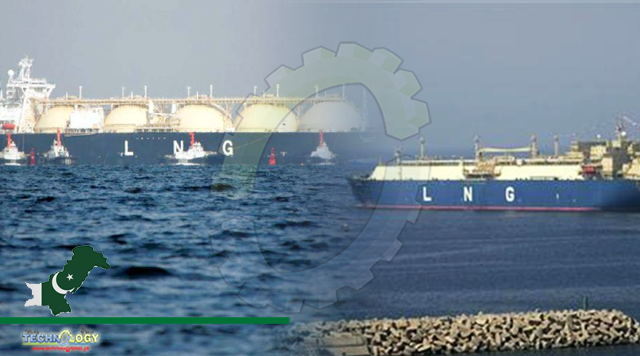The government has formed a committee to identify the people responsible for the delay in dry docking at the Engro LNG floating terminal.

By Zafar Bhutta
The dry docking was due in March last year, but Engro replaced the existing terminal with another one with more capacity of 900 mmcfd of LNG.
Sources said Finance Minister Shaukat Tarin attended a meeting of the cabinet committee on energy (CCoE) on June 18.
They quoted him as saying that someone had tried to pin the blame for the delay on the government that could potentially lead to an energy crisis in the country.
Tarin raised the question as to why was there a delay in dry docking when it was due in March 2020 and then in March this year.
The CCoE formed a committee under the chairmanship of Federal Minister Azam Swati and present a report to it.
During a meeting on Thursday, the law division said an agreement for LNG services was signed between the Sui Southern Gas Company (SSGC) and Engro.
It added that therefore, nobody could stop the ship from moving for dry docking and the SSGC and Engro should settle the issue.
In a last ditch effort, the SSGC sent a letter to Engro on Wednesday to delay the dry docking of a floating storage regasification unit (FSRU) till August this year to avoid the energy crisis.
The CCoE will meet again after receiving a response from Engro in this connection.
Amid fears of looming energy crisis, the CCoE on Thursday entered into deadlock again on the decision to allow Engro LNG floating terminal to replace it with another one for dry docking.
The cabinet body was informed that dry docking was due in March 2020, however, Engro managed to obtain an extension for a year.
However, it was unable to meet the deadline this year as well and wanted to move an FSRU for dry docking.
The sources told The Express Tribune that most members of the cabinet committee opposed giving permission to Engro to go ahead with the move.
They were of the view that Engro should be permitted to move for dry docking in August this year when the demand for gas would be lower compared with other months.
The sources said Engro had started building pressure on the SSGC to allow the replacement of the existing FSRU with another one with a capacity of 900 mmcfd.
The existing FSRU has a capacity of 650 mmcfd.
If it moves now, the Pakistan State Oil (PSO) would be facing the entire burden of supplying furnace oil to power plants.
It does not have the capacity to provide furnace oil to all the power plants in Punjab if the FSRU moves and country is left with only 400 mmcfd of LNG.
The sources said that cabinet committee discussed two options in connection with dry docking.
First option was that Engro should not be allowed for dry docking till August this year.
The second was to approve a gas load shedding management plan to mitigate the crisis in case the Engro FSRU is given the green signal.
Officials said the cabinet during its last meeting had also taken up the matter. During the meeting, the cabinet members had stressed on the need for allowing the FSRU for dry docking in August this year.
In the first option, the petroleum division proposed curtailing regasified liquefied natural gas (RLNG) and indigenous supply to different sectors including fertiliser manufacturers to minimise the damage.
Under a gas load management plan, it was proposed that the Sui Northern Gas Pipelines Limited (SNGPL) could suspend supply of up to 70 mmcfd RLNG to two LNG-based fertiliser plants.
Another proposal was to suspend RLNG supply of up to 40 mmcfd to the CNG sector in Punjab.
The petroleum division also submitted another proposal to suspend around 70 mmcfd indigenous gas to the CNG sector in Khyber-Pakhtunkhwa.
It was proposed that the SNGPL could use spread volumes for system balancing and/or diversion to power plants, subject to charging of the RLNG tariff (where agreement with a power plant for supply of indigenous gas was not available)
Another proposal was to suspend RLNG supply of up to 115 mmcfd to the non-export general industry in Punjab and KP.
The SNGPL was also proposed to cut the supply of RLNG to K-Electric and divert its supply from the gas saved from the CNG/non-export industry.
The cabinet committee members also raised questions over the disparity in taxation. They wanted to take all stakeholders on board including the Federal Board of Revenue (FBR).
It is also interesting that several oil and gas entities like OGDCL, Parco and PPL are working under the administrative control of petroleum division.
These companies had been crying for level playing field and called for imposing regulatory duty on LNG imports.
However, the petroleum division has shot down all demands by the state companies and proposed to waive off advance tax, federal excise duty and regulatory duty on key influential importers who imported LPG from sea.
Originally published at The express tribune